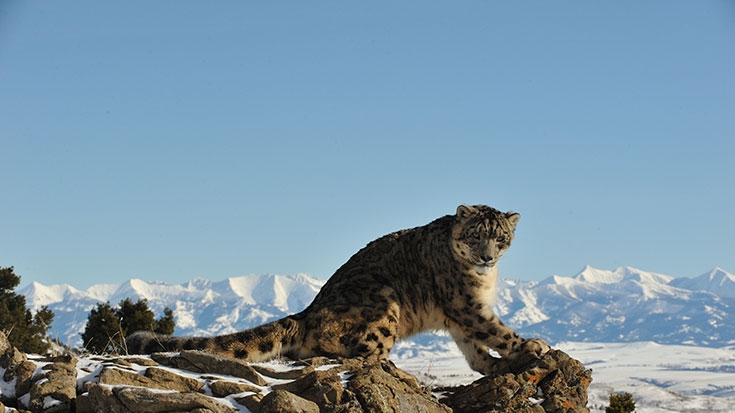Ulaanbaatar, Mongolia, January 10, 2014 – Elusive and enigmatic, the endangered snow leopard inhabits some of the world’s most rugged and remote terrains, like those in Mongolia, where about 1,000 live across the fragmented mountains of the Gobi Desert and Altai regions.
Mongolia is home to the second largest population of snow leopards in the world, after China. There are between 3,900 and 6,400 snow leopards left in the wilds of 12 countries today: Afghanistan to the west, China to the east, Russia to the north and India to the south.
Recently, the governments of these 12 countries convened in Bishkek, Kyrgyz Republic. Together they endorsed a new global initiative to save the snow leopard and conserve high-mountain ecosystems the species rely on, and the Global Snow Leopard Ecosystem Recovery Program.
Over the last year, range countries, including Mongolia, met several times to develop the program, build country ownership, nurture political will at the highest level and design cross-sector solutions to the issues for the first time. The Global Tiger Initiative provided support to these countries in moving from isolated interventions, typically NGO-led, toward collective actions led by the governments.
The Importance of Snow Leopards to Mongolia
The snow leopard species is protected as “very rare” by the Mongolian Law of Wildlife (2012).
Nicknamed “mountain ghosts”, the distinctive cats are rarely seen by people. But they serve as an indicator of the health of landscapes they share with people and livestock. Providing water, hydropower, minerals, livestock-based livelihoods, opportunities for ecotourism, snow leopard landscapes are important resource for rural and regional economies.
Humans pose serious threats to snow leopards’ survival. In Mongolia, they are poached for their skin and bones, meeting the demands of both the fur industry and traditional Chinese medicine. Overhunting and poaching of their traditional prey have caused conflicts between snow leopards and herders. As the number of their wild prey decreased, snow leopards have turned to attacking domestic livestock. To protect their animals and livelihood, herders retaliate by killing the snow leopards.
Increasing development of roads, railways and other infrastructures that support the mining industry in Mongolia is becoming another threat. For example, construction of a paved road and planned railway in the southern and western parts of Mongolia would divide both the habitat and population of snow leopards and their prey in the area.
Since it is a top predator of the mountain ecosystem of Mongolia and Central Asia, the snow leopard is an umbrella species for the conservation of other species and habitats, says B. Munkhtsog, a senior biologist at the Institute of Biology of Mongolian Academy of Sciences.
The preservation of the Mongolian population of snow leopards is also an important part of the efforts to save and recover the Russian population of the species in the northern edge, and maintain the gene flow with the Chinese snow leopard population in the south.

